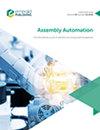基于卷积循环关注网络的滚动轴承剩余使用寿命预测
IF 1.7
4区 计算机科学
Q3 AUTOMATION & CONTROL SYSTEMS
引用次数: 4
摘要
目的目前关于剩余使用寿命(RUL)预测的研究主要依赖于卷积神经网络(cnn)和长短期记忆(LSTMs),没有充分利用注意机制,导致预测精度不足。为了进一步提高上述模型的性能,本研究旨在提出一种新颖的端到端RUL预测框架,称为卷积循环注意网络(CRAN),以达到较高的准确性。本文提出的CRAN是一种基于CNN-LSTM的模型,它有效地结合了CNN强大的特征提取能力和LSTM的顺序处理能力。在CRAN中引入通道注意机制、空间注意机制和LSTM注意机制,对CNN和LSTM分配不同的注意系数。首先,从时域和频域提取轴承振动数据的特征;然后,构造训练集和测试集。然后,使用训练集离线训练CRAN。最后,通过将测试集的数据应用于训练好的CRAN来进行在线RUL估计。发现基于scnn - lstm的模型比基于cnn和lstm的模型具有更高的RUL预测精度。使用最大池化和平均池化相结合的方法可以减少特征信息的损失,并且串行注意机制的结构优于并行注意结构。与六种不同的最先进方法进行比较,对于两种测试轴承的预测结果,所提出的CRAN平均降低均方根误差57.07/80.25%,平均降低绝对误差62.27/85.87%,平均提高得分12.65/6.57%。独创性/价值本文提供了一种新颖的端到端滚动轴承RUL预测框架,可为行业轴承维修方案的制定提供参考。本文章由计算机程序翻译,如有差异,请以英文原文为准。
Remaining useful life prediction of rolling bearings based on convolutional recurrent attention network
Purpose
The current studies on remaining useful life (RUL) prediction mainly rely on convolutional neural networks (CNNs) and long short-term memories (LSTMs) and do not take full advantage of the attention mechanism, resulting in lack of prediction accuracy. To further improve the performance of the above models, this study aims to propose a novel end-to-end RUL prediction framework, called convolutional recurrent attention network (CRAN) to achieve high accuracy.
Design/methodology/approach
The proposed CRAN is a CNN-LSTM-based model that effectively combines the powerful feature extraction ability of CNN and sequential processing capability of LSTM. The channel attention mechanism, spatial attention mechanism and LSTM attention mechanism are incorporated in CRAN, assigning different attention coefficients to CNN and LSTM. First, features of the bearing vibration data are extracted from both time and frequency domain. Next, the training and testing set are constructed. Then, the CRAN is trained offline using the training set. Finally, online RUL estimation is performed by applying data from the testing set to the trained CRAN.
Findings
CNN-LSTM-based models have higher RUL prediction accuracy than CNN-based and LSTM-based models. Using a combination of max pooling and average pooling can reduce the loss of feature information, and in addition, the structure of the serial attention mechanism is superior to the parallel attention structure. Comparing the proposed CRAN with six different state-of-the-art methods, for the predicted results of two testing bearings, the proposed CRAN has an average reduction in the root mean square error of 57.07/80.25%, an average reduction in the mean absolute error of 62.27/85.87% and an average improvement in score of 12.65/6.57%.
Originality/value
This article provides a novel end-to-end rolling bearing RUL prediction framework, which can provide a reference for the formulation of bearing maintenance programs in the industry.
求助全文
通过发布文献求助,成功后即可免费获取论文全文。
去求助
来源期刊

Assembly Automation
工程技术-工程:制造
CiteScore
4.30
自引率
14.30%
发文量
51
审稿时长
3.3 months
期刊介绍:
Assembly Automation publishes peer reviewed research articles, technology reviews and specially commissioned case studies. Each issue includes high quality content covering all aspects of assembly technology and automation, and reflecting the most interesting and strategically important research and development activities from around the world. Because of this, readers can stay at the very forefront of industry developments.
All research articles undergo rigorous double-blind peer review, and the journal’s policy of not publishing work that has only been tested in simulation means that only the very best and most practical research articles are included. This ensures that the material that is published has real relevance and value for commercial manufacturing and research organizations.
 求助内容:
求助内容: 应助结果提醒方式:
应助结果提醒方式:


